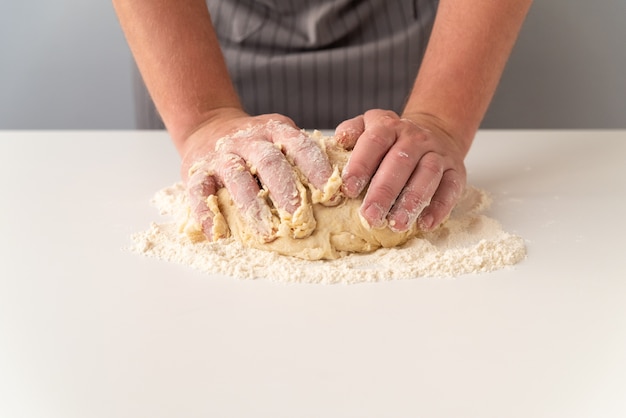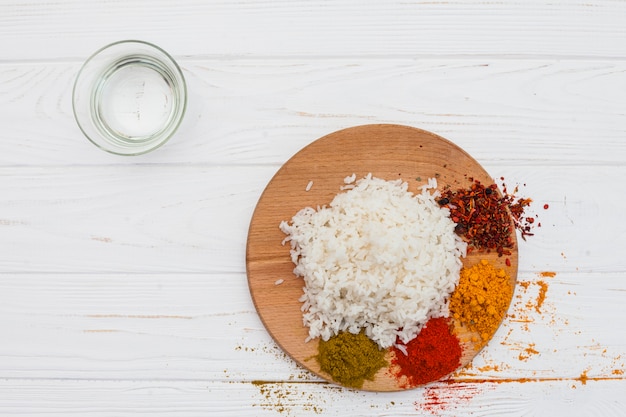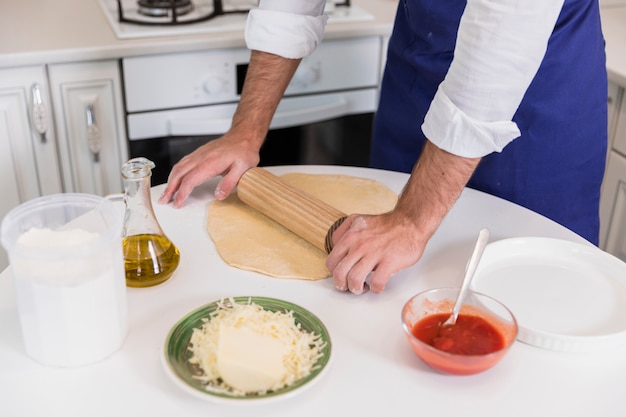Let's face it, cooking rice can be a bit of a mystery. Sometimes it comes out perfectly fluffy and delicious, other times it's a sticky, mushy mess. It's enough to make anyone question their culinary skills! But fear not, my fellow food enthusiasts, because I'm here to share the secrets to perfect rice every single time. I've learned a thing or two over the years, experimenting with different methods, ratios, and even rice varieties. And trust me, once you understand the basics, you'll be whipping up fluffy, flavorful rice like a pro in no time. So, grab your favorite mug, pour yourself a cuppa, and let's embark on this rice-cooking adventure together.
(Part 1) choosing the right rice: The Foundation of Success

The first step to achieving rice perfection is choosing the right type of rice. Just like grapes can be transformed into different wines, rice comes in a variety of forms, each with its own unique qualities and best uses. Here's a closer look at some of the most popular types:
long grain rice: The Versatile All-Rounder
Long grain rice is the classic workhorse of the kitchen, and for good reason. It boasts long, slender grains that separate easily when cooked, resulting in that airy, fluffy texture we all crave. Think of it as the versatile friend who's always up for anything - stir-fries, curries, rice bowls, you name it. This is my go-to for everyday meals because it's reliable, readily available, and relatively affordable. It's also a fantastic blank canvas for all sorts of flavors, making it ideal for absorbing the richness of sauces or the subtle notes of herbs and spices.
medium grain rice: The Perfectly Balanced Option
Medium grain rice, as the name suggests, falls somewhere between long grain and short grain in terms of size and texture. It cooks up slightly stickier than long grain, resulting in a chewier, more substantial bite. This makes it a popular choice for sushi, as the grains hold their shape beautifully when rolled into sushi rolls. It also works beautifully in rice puddings and other desserts, adding a lovely creaminess and richness. Personally, I find medium grain rice to be a great balance between the fluffiness of long grain and the stickiness of short grain, making it a versatile choice for both savory and sweet dishes.
short grain rice: The Star of Risotto and More
Short grain rice is my personal favorite for risotto! Its plump, rounded grains release starch as they cook, creating a luxuriously creamy, almost porridge-like consistency that's simply divine. It's also a good choice for sushi, but if you're going for an authentic experience, you might want to opt for sticky rice, which is specifically designed for sushi. While short grain rice is known for its creamy texture, it's also quite versatile and can be used in stir-fries, rice bowls, and even sweet dishes. Just remember that its stickier nature may require adjusting the cooking method or liquid ratio depending on the recipe.
brown rice: The Nutritious and Chewy Option
Brown rice is the whole grain version of white rice, meaning it retains the bran and germ, which are rich in nutrients. It has a slightly nutty flavor and chewier texture compared to white rice. While it takes a bit longer to cook, it's packed with fiber, vitamins, and minerals. I love incorporating brown rice into my diet for a boost of nutrition, and I find it pairs well with hearty dishes like lentil stews or roasted vegetables. For a more flavorful experience, try wild rice or black rice, which have even more pronounced flavors and textures.
(Part 2) Assembling Your Rice-Cooking Arsenal: The Essential Tools

Now that you've chosen your rice, it's time to gather your tools. You don't need a fancy kitchen to cook perfect rice, but having the right equipment will make the process easier and more enjoyable. Here's what I recommend:
A rice cooker: The Set-It-and-Forget-It Hero
A rice cooker is my go-to method for foolproof rice, especially when I'm short on time or need to multitask. It takes all the guesswork out of cooking, automatically adjusting the cooking time and temperature based on the type of rice you're using. Simply add your rice, water, and a pinch of salt, press the button, and let it do its magic. The best part? The rice stays warm for a while, so you can enjoy it at your leisure. If you're a busy bee or simply appreciate the convenience factor, a rice cooker is a fantastic investment.
A Saucepan: The Classic and Versatile Choice
If you don't have a rice cooker, a saucepan is a perfectly good alternative. Choose one with a lid and ideally a non-stick surface to prevent sticking. The size of the saucepan depends on the amount of rice you're making, but a medium-sized saucepan works well for most quantities. I personally prefer a saucepan with a thick bottom, as it helps distribute heat evenly and prevents scorching. A good quality saucepan is a kitchen essential, and you'll find yourself using it for a variety of cooking tasks beyond just rice.
A Measuring Cup and a Measuring Spoon: Precision is Key
Getting the right ratio of rice to water is crucial for perfect rice, so having a measuring cup and a measuring spoon on hand is a must. I use a 1-cup measuring cup for most of my rice cooking, but you can adjust based on your needs. Don't forget a measuring spoon for the salt - a tiny pinch goes a long way! Precise measuring is especially important for beginners, as it helps ensure consistent results and prevents over- or undercooked rice.
A Fine-Mesh Sieve or Colander: The Rinse Master
Rinsing rice before cooking is an important step, as it removes excess starch that can cause stickiness. A fine-mesh sieve or colander is the perfect tool for this job. Simply place the rice in the sieve or colander and rinse it under cold water until the water runs clear. Be gentle, you don't want to break the rice grains. A good rinse will make a noticeable difference in the final texture of your rice.
(Part 3) Rice Cooker Cooking: Simplicity at Its Finest

Let's start with the easiest way to cook rice: the trusty rice cooker. It's a lifesaver for busy days or for those who prefer a hands-off approach to cooking.
- Rinse the rice. Give your rice a thorough rinse under cold water until the water runs clear. This helps remove excess starch, leading to a fluffier texture.
- Add the rice and water to the rice cooker. The most common ratio is 1:1 (rice to water), but always check the instructions for your specific model, as some may require slight adjustments. Add a pinch of salt for extra flavor.
- Press the button and let the magic happen. Once the cooking cycle is complete, the rice cooker will automatically switch to a "warm" setting, keeping your rice ready to eat until you're ready to serve.
And there you have it! It's that simple. I usually let the rice sit in the rice cooker for a few minutes after the cooking cycle ends, allowing the steam to distribute evenly and enhance the fluffy texture. Then, just give it a gentle fluff with a fork and enjoy! Rice cooker cooking is a true testament to the power of technology, making perfect rice a breeze.
(Part 4) Stovetop Cooking: Mastering the Classic Method
While rice cookers are convenient, cooking rice on the stovetop is a classic technique that offers a bit more control and versatility. Here's a step-by-step guide:
- Rinse the rice. Rinse the rice thoroughly under cold water until the water runs clear, as this will help remove excess starch for a fluffier texture.
- Add the rice and water to the saucepan. The recommended ratio is 1:1.5 (rice to water), but you can adjust slightly depending on your preference. I tend to use a slightly higher ratio of water for long grain rice, as it absorbs more liquid. And don't forget the pinch of salt!
- Bring the water to a boil. Heat the rice and water over medium heat, stirring occasionally to prevent sticking. Once the water boils, reduce the heat to low, cover the saucepan with a lid, and simmer for 15-20 minutes, or until the rice is cooked through and the water is absorbed. Keep an eye on the rice to ensure it doesn't overcook and become mushy.
- Let the rice rest. Once the rice is cooked, turn off the heat and let it sit, covered, for 5-10 minutes. This allows the steam to distribute evenly, resulting in a light and fluffy texture.
It might seem like a lot of steps, but it's truly straightforward. The key is to maintain a gentle simmer and watch the rice closely to ensure it cooks evenly. With a little practice, you'll become a master of stovetop rice cooking. And if you're feeling unsure, there are countless helpful videos online that can guide you through the process.
(Part 5) Rice cooking tips and Tricks: Elevating Your Rice Game
Now that you've mastered the fundamentals, let's dive into some of my insider tips and tricks that will help you achieve rice perfection consistently.
The Art of Not Overcooking: Achieving the Perfect Bite
Overcooked rice can be a culinary tragedy. It becomes mushy, sticky, and unpleasant. So, keep a close eye on the cooking time. If you're using a rice cooker, follow the instructions for your specific model. For stovetop cooking, check the rice every few minutes to see if it's cooked through. You want the rice to be tender but still have a slight bite to it. This means it should be cooked through, but not mushy or overdone.
Stirring is a No-No: Maintaining Grain Integrity
Stirring rice while it's cooking can disrupt the grains and create a sticky mess. Resist the urge to stir once you've added the rice and water to the saucepan. Let it cook undisturbed for optimal results. The gentle simmer and the steam created by the lid will do the magic of cooking the rice evenly without the need for stirring.
Cold Water is the Secret: Ensuring Even Cooking
Using cold water is essential for even cooking and prevents sticking. If you use hot water, the rice will start cooking before it even reaches a boil, leading to uneven cooking and potentially a sticky bottom. Always start with cold water, and you'll be rewarded with perfectly cooked rice.
Fluffing for Fluffiness: The Final Touches
Once the rice is cooked, give it a good fluff with a fork to separate the grains and create that airy, light texture. This simple step makes a noticeable difference in the final product, enhancing the fluffiness and making it even more enjoyable to eat.
Adjusting for Brown Rice: A Different Approach
Brown rice takes longer to cook than white rice and requires a slightly different ratio of water. I usually use a 1:2 ratio of brown rice to water, which yields a fluffy and delicious result. Always check the packaging of your brown rice for specific cooking instructions, as different brands may have slightly different requirements.
(Part 6) Exploring the Flavor Frontier: Elevating Rice Beyond Ordinary
Now that you've mastered the art of cooking perfect rice, let's explore ways to enhance its flavor and make it even more delicious. Remember, rice is a versatile canvas for creativity, and with a few simple additions, you can transform it from a basic side dish into a culinary masterpiece.
Adding Herbs and Spices: A Symphony of Flavor
A pinch of turmeric, a sprinkle of cumin, a few sprigs of cilantro – the possibilities are endless! Experiment with different herbs and spices to create your own unique flavor profiles. Try a blend of ginger and garlic for a savory kick, or add a touch of cinnamon or cardamom for a warm and comforting note. Remember, a little goes a long way, so start with small amounts and adjust according to your taste.
Aromatic Infusions: Enhancing Flavor with Sauteed Goodness
Sautéing onions, garlic, or ginger in a bit of oil before adding the rice can infuse it with incredible flavor. The caramelized onions add sweetness, the garlic adds a pungent punch, and the ginger adds a warm, earthy note. You can even add a few chopped chili peppers for a spicy kick. This simple step adds a layer of depth and complexity to your rice, elevating it to another level.
Citrus Zest: A Bright and Refreshing Touch
A little bit of lemon or lime zest can add a burst of brightness and freshness to your rice. It complements savory dishes like chicken or seafood, and even adds a unique twist to vegetarian options. The citrus zest adds a subtle fragrance and a tangy note, making your rice even more appealing and enticing.
rice pilaf: A Flavor-Packed Classic
Rice pilaf is a timeless dish that involves cooking rice with vegetables, herbs, and spices. It's a great way to add a burst of flavor, texture, and nutritional value to your meal. You can use any type of vegetables you like, but some popular choices include onions, carrots, peas, mushrooms, and bell peppers. Try experimenting with different combinations to create your own signature pilaf.
Beyond the Basics: Exploring Rice's Culinary Potential
Rice can be so much more than just a side dish. Its versatility allows it to shine in a wide range of dishes, from creamy risotto to comforting rice pudding. Embrace your inner culinary adventurer and explore the possibilities.
- Risotto. This creamy Italian rice dish is a true culinary delight. The secret lies in its slow cooking method, where the rice releases its starch, creating a luscious and silky texture.
- fried rice. A classic Asian dish that's perfect for using up leftovers. It's a fun and flavorful way to repurpose your cooked rice, adding vegetables, protein, and a touch of soy sauce for a savory and satisfying meal.
- Rice Pudding. A comforting and nostalgic dessert that's perfect for cozy evenings. This sweet and creamy treat is made with rice, milk, sugar, and spices. It's a simple dessert that can be easily customized with different flavors and textures.
(Part 7) FAQs: Addressing Your Rice-Related Concerns
Still have some questions? Don't worry, we've got you covered! Here are answers to some of the most common questions about cooking rice.
1. What if my rice is too dry?
If your rice is too dry, you can try adding a little bit more water and letting it simmer for a few more minutes. But be careful not to add too much water, or you'll end up with mushy rice. You can also try adding a little bit of broth to the rice, which will add moisture and flavor.
2. What if my rice is too sticky?
If your rice is too sticky, it's likely that you used too much rice or not enough water. Next time, try using a slightly higher ratio of water to rice. You can also try rinsing the rice more thoroughly before cooking to remove excess starch.
3. Can I use brown rice in a rice cooker?
Absolutely! Brown rice can be cooked in a rice cooker, but it may require a slightly longer cooking time and a different water ratio. Refer to your rice cooker's instructions for specific guidance on cooking brown rice.
4. How long can I keep cooked rice in the fridge?
You can safely keep cooked rice in the fridge for up to 3-4 days. Make sure to store it in an airtight container to prevent it from drying out or absorbing flavors from other foods in your fridge.
5. How do I reheat cooked rice?
You can reheat cooked rice in the microwave or on the stovetop. For microwave reheating, heat it in 30-second intervals, stirring in between, until it's warm through. If you're reheating on the stovetop, add a little bit of water or broth to the rice and heat it over low heat, stirring occasionally, until it's warm.
(Part 8) Final Thoughts: Embrace the Rice-Cooking Journey
And there you have it - your comprehensive guide to perfect rice! I hope this has demystified the process and ignited your passion for cooking this versatile ingredient. Remember, practice makes perfect, and the more you experiment with different methods and flavors, the more confident you'll become in your rice-cooking abilities. So, embrace the journey, have fun with it, and don't be afraid to try new recipes and techniques. Happy rice cooking!
Everyone is watching

Corn on the Cob: The Ultimate Guide to Perfectly Cooked Ears
Healthy MealsAh, corn on the cob. Just the name evokes images of sunny days, barbecues, and that sweet, juicy flavour that ...

Perfect Pork Roast Oven Cooking Time: A Guide to Delicious Results
Healthy MealsThere's something truly satisfying about a perfectly roasted pork. The aroma alone is enough to make your mout...

Ham Cooking Time: How Long to Bake, Smoke, or Boil a Delicious Ham
Healthy MealsAh, ham. It's a classic, isn't it? A real crowd-pleaser, especially around holidays. And when done right, it'...

Scallops: The Ultimate Guide to Perfect Cooking
Healthy MealsAh, scallops. Those delicate, sweet, and utterly delicious morsels of the sea. They hold a special place in my...

Spaghetti Squash: The Ultimate Guide to Cooking and Serving
Healthy MealsRemember that time you saw spaghetti squash at the supermarket, looking all bumpy and strange, and thought, "W...
